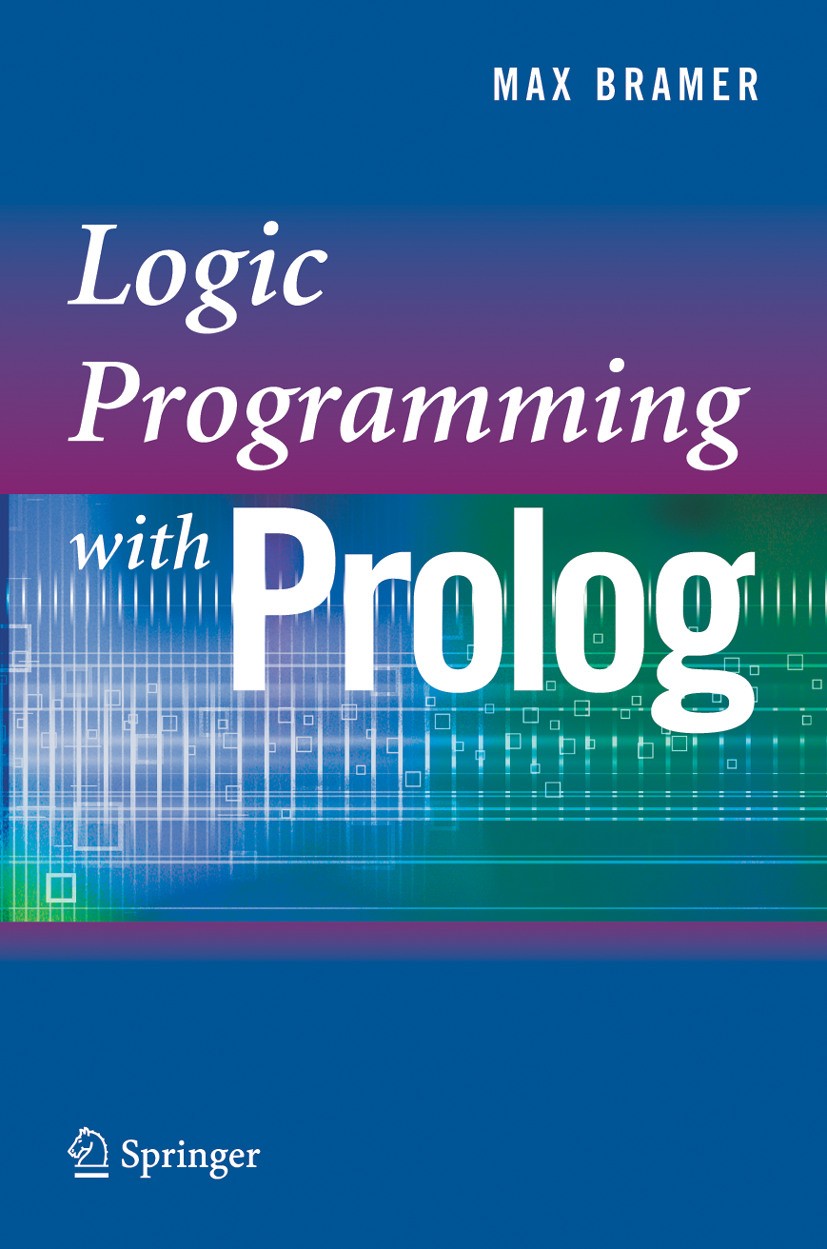| 书目名称 | Logic Programming with Prolog |
| 编辑 | Max Bramer |
| 视频video | http://file.papertrans.cn/588/587924/587924.mp4 |
| 概述 | Covers principal features of the language, including unification and backtracking in detail using examples and diagrams – but without recourse to mathematical formalism.Suitable as textbook or for sel |
| 图书封面 |  |
| 描述 | Logic Programming is the name given to a distinctive style of programming, very different from that of conventional programming languages such as C++ and Java. Fans of Logic Programming would say that ‘different‘ means clearer, simpler and generally better! Although there are other Logic Programming languages, by far the most widely used is Prolog. The name stands for Programming in Logic. This book teaches the techniques of Logic Programming through the Prolog language. Prolog is based on research by computer scientists in Europe in the 1960s and 1970s, notably at the Universities of Marseilles, London and Edinburgh. The first implementation was at the University of Marseilles in the early 1970s. Further development at the University of Edinburgh led to a de facto standard version, now known as Edinburgh Prolog. Prolog has been widely used for developing complex applications, especially in the field of Artificial Intelligence. Although it is a general-purpose language, its main strengths are for symbolic rather than for numerical computation. The developers of the language were researchers working on automating mathematical theorem proving. This field is often known as computation |
| 出版日期 | Textbook 20051st edition |
| 关键词 | Processing; Programming Languages; Prolog; Rack; artificial intelligence; declarative programming; logic; l |
| 版次 | 1 |
| doi | https://doi.org/10.1007/1-84628-212-8 |
| isbn_ebook | 978-1-84628-212-6 |
| copyright | Springer-Verlag London 2005 |
 |Archiver|手机版|小黑屋|
派博传思国际
( 京公网安备110108008328)
GMT+8, 2025-12-19 02:37
|Archiver|手机版|小黑屋|
派博传思国际
( 京公网安备110108008328)
GMT+8, 2025-12-19 02:37


